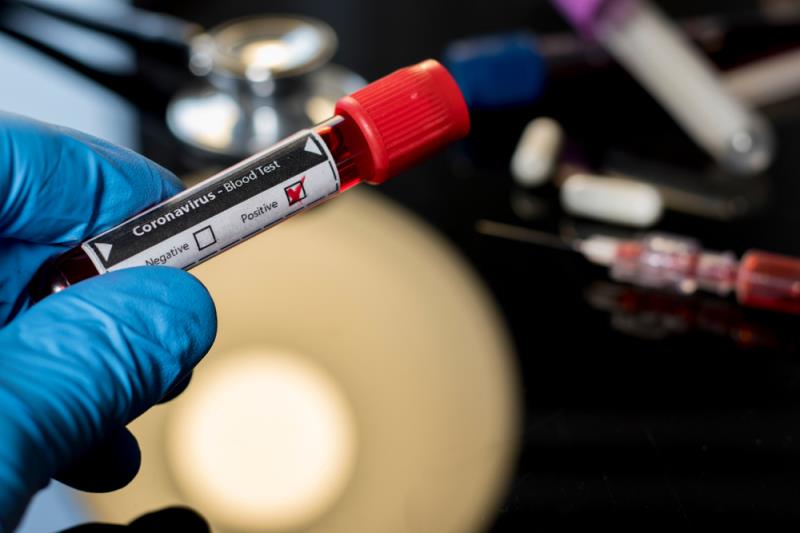
Researchers from institutions in China have released findings on 41 patients infected with the 2019 novel coronavirus (2019-nCoV) in Wuhan.
The 2019-nCoV was discovered in December 2019 after a number of patients presented with pneumonia of unknown cause in Wuhan. Samples taken from the patients’ lower respiratory tracts indicated a novel coronavirus that was later named 2019 novel coronavirus.
The findings published in The Lancet included 41 patients who were confirmed to have 2019-nCoV through laboratory testing: next-generation sequencing or real-time reverse transcription polymerase chain reaction (RT-PCR). [Available at https://doi.org/10.1016/S0140-6736(20)30183-5] Researchers described epidemiological, clinical, laboratory, and radiological characteristics of the 41 patients admitted to the Jin Yin-tan Hospital in Wuhan, Hubei, China. They also compared the clinical features of those admitted to the intensive care unit (ICU) with non-ICU patients.
Of the 41 2019-nCoV patients, 20 were aged 25–49 while 14 were 50–64. Most of the patients had fever (40), dry cough (31), and myalgia or fatigue (18) at onset of illness. The median duration from onset of symptoms to dyspnoea was 8.0 days (interquartile range, IQR 5.0–13.0), and involved 22 (55 percent) of 40 patients. More than one-third (13) had to be admitted to the ICU for oxygen therapy to correct hypoxaemia.
With regard to serology, 10 patients had leucopenia (white blood cell count <4x109/L) while 26 patients had lymphopenia (lymphocyte count <1.0x109/L). ICU patients had increased prothrombin time and D-dimer level upon admission (median prothrombin time 12.2 s [IQR 11.2–13.4]; median D-dimer level 2.4 mg/L [0.6–14.4]). Aspartate aminotransferase levels were raised in 15 patients, including eight ICU patients. Five patients had raised levels of hypersensitive troponin I, and were diagnosed with virus-related cardiac injury.
Plasma levels of selected cytokine signalling molecules, cell signalling proteins, growth factors, cytokines, and chemokines, were raised in all patients—more pronounced among ICU patients compared with non-ICU patients.
While all patients had pneumonia, some developed complications such as acute respiratory distress syndrome (ARDS, 12), RNAaemia* (6), acute cardiac injury (5), and secondary infections (4). All patients received empirical antibiotic treatment; 38 were given oseltamivir; and nine were placed on systemic corticosteroids.
As of 22 January, 28 patients were discharged when fever had subsided for at least 10 days, chest radiographic evidence showed improvement, and samples from upper respiratory tract indicated viral clearance. Six patients died.
Based on the findings, the researchers strongly recommended healthcare workers use personal protective equipment such as fit-tested N95 respirator, and closely monitor themselves for onset of fever and respiratory symptoms. When exposed to patients with 2019-nCoV, healthcare workers should be tested to identify asymptomatic infection.
As the findings are based on a modest-sized case series of patients and have some limitations, the researchers called for further studies to gather more information on 2019-nCoV.
“Reliable quick pathogen tests and feasible differential diagnosis based on clinical description are crucial for clinicians in their first contact with suspected patients.
“Because of the pandemic potential of 2019-nCoV, careful surveillance is essential to monitor its future host adaptation, viral evolution, infectivity, transmissibility, and pathogenicity,” the researchers said.
MOH Malaysia releases guidelines
MOH has released the 2019 Novel Coronavirus (2019-nCoV) Management Guidelines in Malaysia for healthcare professionals. [Available at https://mma.org.my/web/wp-content/uploads/2020/01/Combine-PDF-Guideline.pdf]
According to the guidelines, patients with fever, clinical symptoms suggestive of pneumonia, or severe respiratory infection with breathlessness, and had history of travel to or reside in Mainland China within the previous 14 days, or had close contact with a confirmed case of 2019-nCoV, should be isolated immediately and sent using designated ambulance to 57 designated screening hospitals.
Patients under investigation (PUI) and those confirmed to have 2019-nCoV should be sent using designated ambulance to 26 designated hospitals for admission. For the list of designated hospitals for screening and admission, refer to Annex 3 of the guidelines.